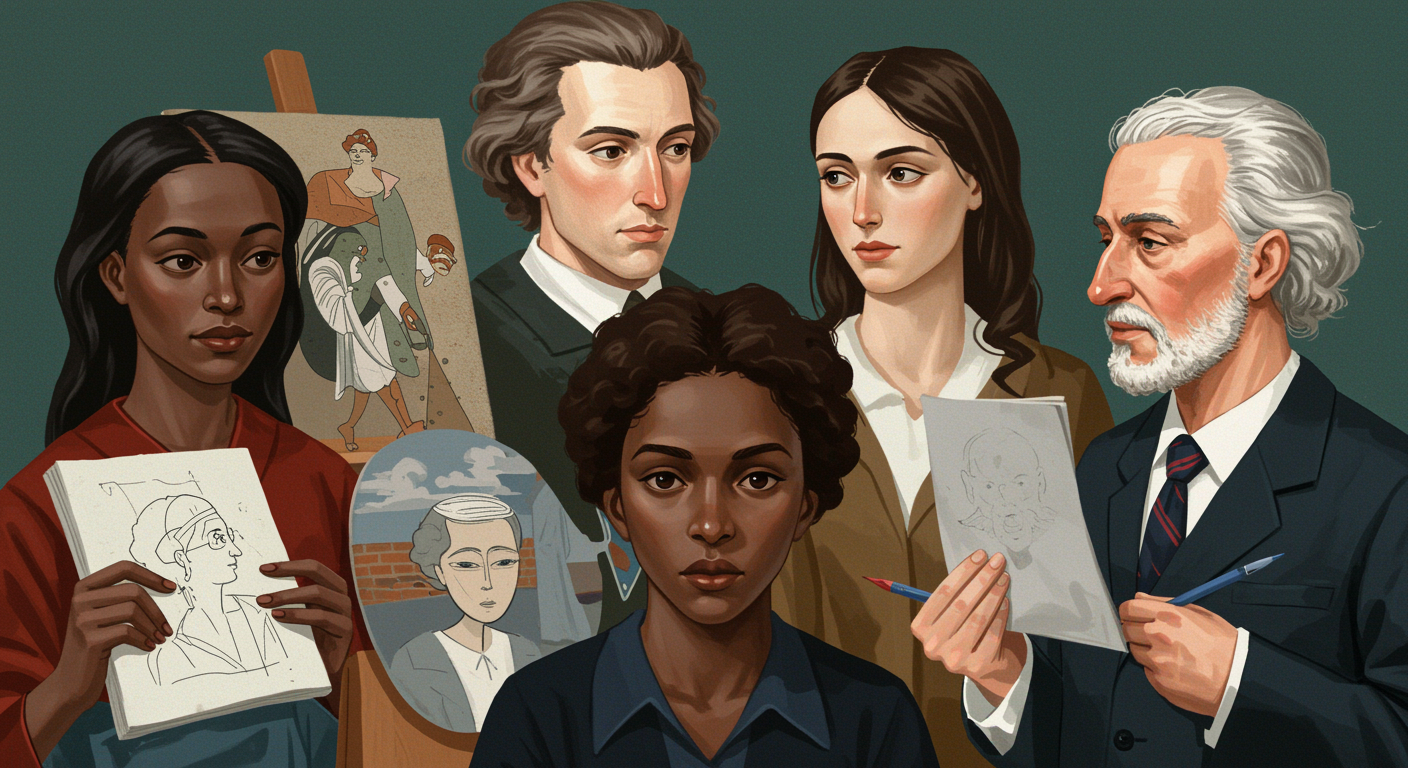
Have you ever looked at a piece of ancient sculpture and found yourself thinking, “I’ve seen something remarkably similar, but from a completely different time and place”? It’s not a trick of the light, nor is it a coincidence. Across millennia and vast geographical divides, artists have independently arrived at strikingly similar creative ideas, forms, and expressions. This phenomenon, where an artist in ancient Greece might craft a figure with the same stoic pose as one from ancient Egypt, or where abstract patterns reappear in cultures that never interacted, offers a profound glimpse into the nature of human creativity itself.
This isn’t about plagiarism across the ages; it’s about deep-seated shared mechanisms that guide artistic output. The question isn’t if it happens, but why artists, often isolated by centuries and continents, seem to tap into a universal wellspring of forms and narratives. The answers lie in a fascinating interplay of human biology, psychology, material constraints, and our shared environment, shaping how we perceive, create, and communicate through art.
One significant factor is the fundamental shared biology of being human. Our brains, despite cultural nuances, are wired in remarkably similar ways to perceive patterns, recognize faces, and interpret emotions. This universal cognitive architecture influences how we interpret the visual world and, consequently, how we choose to represent it. For instance, the human form, with its inherent bilateral symmetry and range of motion, naturally lends itself to certain poses and proportions. Consider the sculptures of the ancient Egyptian Old Kingdom and the early Greek Archaic period. The upright, front-facing “kouros” figures from Greece, with their left foot slightly advanced and arms stiffly at their sides, bear a striking resemblance to their Egyptian counterparts. While there was some cultural exchange, the independent development of such specific conventions speaks to a deep-seated, perhaps optimal, way to represent the human body in stone during those periods, constrained by both material and perceptual understanding.
Furthermore, the materials and tools available to artists often impose their own set of constraints and possibilities, subtly guiding creative outcomes. Whether working with clay, stone, wood, or paint, each medium has inherent properties that favor certain forms or techniques. Early ceramic pots, for example, regardless of their origin from Neolithic Europe or indigenous Americas, frequently share common shapes like rounded bases and narrow necks. This isn’t because ancient potters were sharing blueprints; it’s because those forms are structurally sound, efficient for firing, and practical for carrying or storing liquids. Similarly, the tensile strength of wood versus stone influenced what kinds of structures could be built and what sculptural forms were feasible, leading to convergent solutions in different cultures facing similar engineering challenges.
Beyond our shared physical and material realities, humanity also shares a spectrum of universal experiences and psychological archetypes. Birth, death, love, fear, sustenance, and the quest for meaning are experiences common to all people, regardless of time or place. These profound aspects of human existence often manifest in recurring symbolic motifs and narratives within painting, sculpture, and other artistic expressions. The “Mother Goddess” figure, for instance, appears in various forms across Paleolithic cultures globally, from the Venus of Willendorf to similar figurines found in Siberia and the Near East. These small, often exaggerated female forms suggest a shared reverence for fertility and life-giving power, independently conceived but visually resonant.
Even abstract designs show this strange echoing. Spirals, geometric patterns, and interlocking shapes appear in ancient Celtic art, Islamic tile work, Aboriginal Australian painting, and Indigenous American textiles, often without any direct historical lineage. These patterns might stem from observing natural phenomena (the spiral of a shell or a galaxy, the fractal branching of trees) or from the inherent symmetries and patterns our brains naturally seek and find aesthetically pleasing. The golden ratio, a mathematical constant, has been observed in everything from the Parthenon to the works of Leonardo da Vinci, and even in the natural growth patterns of plants, suggesting a fundamental aesthetic preference rooted in our perception of balance and harmony.
So, what does this tell us about creativity? It suggests that while individual artists bring their unique perspectives, they also operate within a broader, often unconscious framework of human perception and possibility. This framework is shaped by our shared biology, the physics of our world, and the deep-seated human experiences that connect us all. When an artist creates, they are not just inventing from a blank slate; they are also responding to these universal currents, often finding solutions that resonate across the ages. This convergence in art is a testament to our shared humanity, a fascinating reminder that despite our differences, we are all part of a grand, ongoing conversation, echoing through time and form.